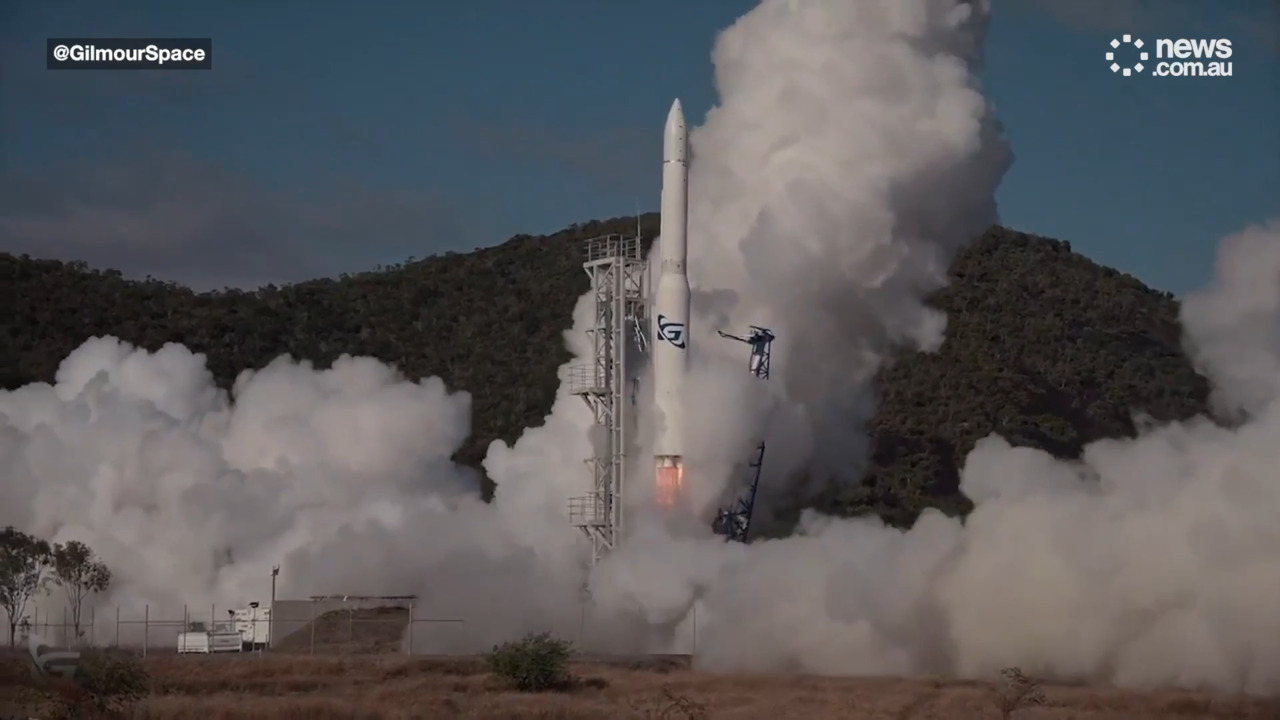July 30, 2025
On the morning of Wednesday, July 30, 2025, a historic yet brief chapter in Australia’s space ambitions came to a close just 14 seconds after it began. The nation’s first domestically designed and manufactured orbital rocket, named Eris, launched from a spaceport near Bowen in northern Queensland, only to crash moments later. This maiden flight, an ambitious attempt by Gilmour Space Technologies, was meant to carry small satellites into orbit and marked the first orbital launch attempt from Australian soil in over 50 years. While the outcome was not the intended one, the company and other industry observers have framed the event not as a failure, but as a critical and successful first step in a long and difficult journey.
The 23-meter (75-foot) Eris rocket cleared its launch tower successfully, and according to the company, all four of its hybrid-propelled engines ignited as planned, achieving 23 seconds of engine burn time. However, videos from the launch site show the rocket, after a brief hover, appearing to struggle and then veering sideways before plummeting back to the ground, disappearing from view in a plume of smoke. There were no injuries or environmental damage reported from the incident, and the launch site infrastructure remained intact.
This test flight was a long time in the making. Gilmour Space had previously postponed the launch multiple times, first in May and then again earlier in July, due to a combination of technical issues and adverse weather conditions, including a tropical cyclone. The long-awaited launch finally took place after a period of intense preparation and a final weather window. Despite the short flight time, the company maintained an optimistic tone. In a statement posted on Facebook and through comments by its CEO, Adam Gilmour, the company highlighted the fact that the rocket successfully left the launchpad as a major achievement. Gilmour, acknowledging that he would have preferred more flight time, expressed satisfaction with the results, stating that the team was safe and had obtained valuable flight data to inform future launches.
The company’s positive spin is rooted in the widely held belief within the space industry that first attempts at orbital launches are rarely successful. Gilmour himself had previously stated that it was “almost unheard of” for a private company to succeed on its first try. The firm had set a pragmatic benchmark for success: simply getting the rocket off the ground. The launch, in this regard, was deemed a success, a sentiment echoed by Mayor Ry Collins of the Whitsunday Regional Council, who called it a “huge achievement” and an “important first step towards the giant leap” of a future commercial space industry in the region.
The Eris rocket program is a significant endeavor for Australia, backed by both private funders and government support. Gilmour Space Technologies received a 5 million Australian dollar grant from the federal government for the Eris rocket’s development this month, following a larger AU$52 million agreement in 2023 to advance space technology in the country. This funding underscores the national interest in developing a sovereign launch capability. While Australia has been the site of hundreds of suborbital launches, the last successful orbital launch from its soil was in 1971, when a British Black Arrow rocket launched from Woomera. The Eris launch, therefore, was a significant milestone, regardless of its outcome. The data collected from its brief flight will be crucial for the development and improvement of the next vehicle, which the company says is already in production. The ambition to place Australia among the small club of nations with independent orbital launch capabilities remains strong, and the experience of this 14-second flight is now part of that foundation.




